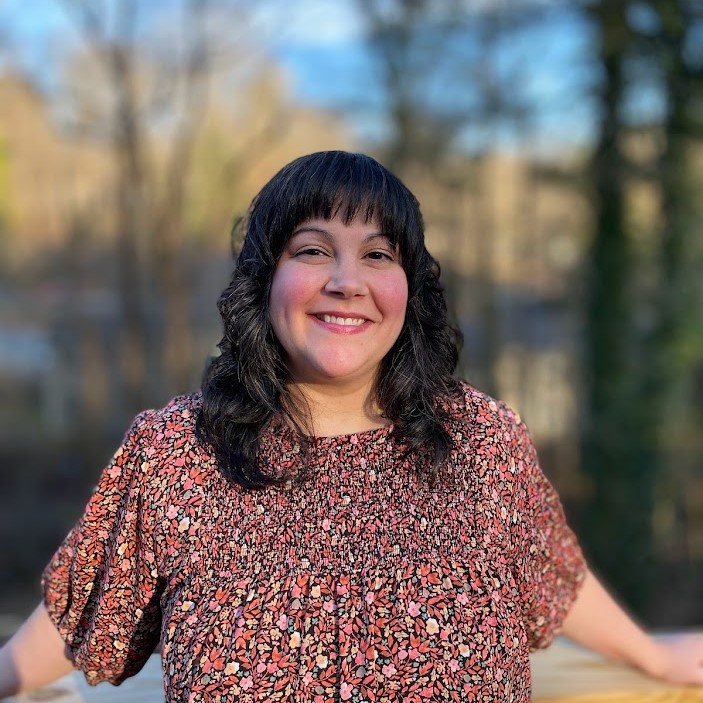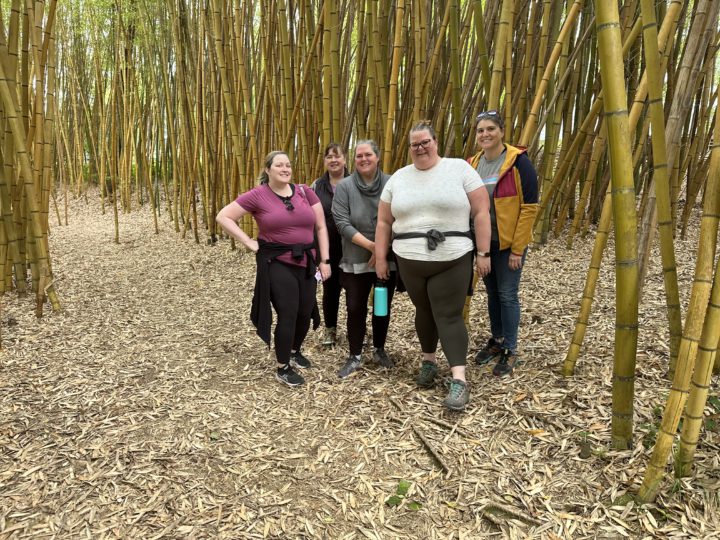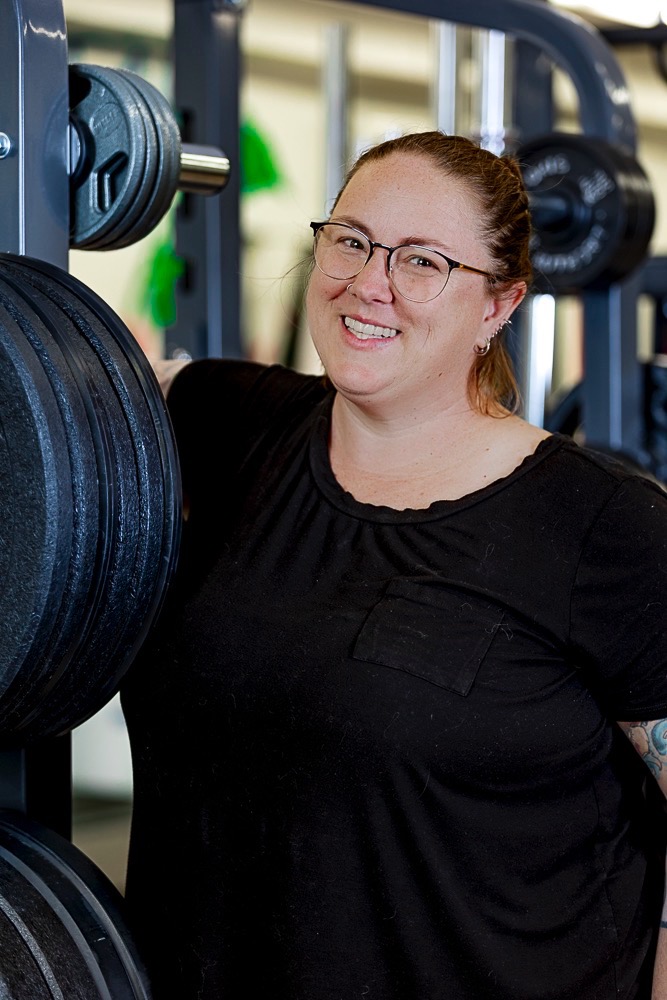Embarking on a journey toward a healthier lifestyle can be a daunting task for some, especially in a world overwhelmed with ever-changing diet fads and gym regimes. The fitness landscape is often clouded with trends that promote quick fixes and unrealistic expectations.
For many locals, such approaches do not work, and they are using their voices to emphasize and redefine what it means to be healthy — going beyond physical appearance and focusing on nurturing the mind, body and soul to create a holistic approach to wellness and well-being.
Diets don’t always work
For years, Naomi Katz has been researching the psychology behind dieting and how to shift mindsets about what the ideal body is and what it means to be healthy. Now, along with being a personal trainer, she is an intuitive eating, body image and self-trust coach, offering her services through her business Happy Shapes, which she established in 2016.
“It’s only a little bit about food and exercise,” Katz says. “Honestly, it’s primarily about how we incorporate autonomy and reclaim autonomy from diet culture.”
She says that a lot of her clients understand that diets don’t always work and larger bodies are not inherently unhealthy or bad. The challenge is internalizing this knowledge.
“The work that we do together, it’s kind of like bridging that gap,” she says. “And one of the biggest ways to do that is to help people look at their own lived experiences,” Katz says.

Within her own life, Katz has confronted personal struggles maintaining a positive self-image. In her 20s, she suffered from an eating disorder. Later, she reverted to chronic dieting and exercising.
“Over the years, I started to let go of the idea of weight necessarily as a marker of health. But I still very much thought that diet and exercise were the keys to health,” Katz says.
It wasn’t until she learned about intuitive eating that her perspective began to shift.
Obstacles and stigmas
The concept of intuitive eating was coined by registered dietitian Evelyn Tribole and nutrition therapist Elyse Resch in their 1995 book Intuitive Eating: A Revolutionary Program That Works.
“What’s so different about intuitive eating versus a diet is that there is no end point. Intuitive eating is a practice that you continue to learn about for the rest of your life,” Katz explains.
According to Katz, Tribole and Resch kept seeing patterns with clients who committed to a strict diet but struggled to lose weight. Ultimately, the co-authors concluded that diets did more harm than good. Along with being ineffective, they triggered negative emotions such as shame and guilt.
“If you’ve been dieting your entire life, what does that mean?” Katz posits. “You don’t even really know how to eat on your own anymore. You don’t know how to trust your body’s cues.”
Katz and her clients work together to better understand concepts such as body liberation and intuitive eating. They then apply these lessons to their personal lives.
“This work kind of has to happen on multiple levels. We want to do the work ourselves personally, and we also have to recognize where the work actually needs to be done outside of ourselves on a systemic level,” Katz says.
Although there are societal obstacles and stigmas outside an individual’s control — like stores not carrying inclusively sized clothing or seats that don’t accommodate all body types — Katz says there are ways to navigate these issues without internalizing the anger.
“Instead of turning it inward on ourselves and trying to fix our bodies, we turn it outward at the system and find ways to advocate and make changes outside of ourselves,” Katz says. “Self-advocacy and community advocacy and stuff like that is actually a really big part of this work for some people. Because it allows you to stop feeling like you’re the problem.”
One way Katz achieves this is through her podcast, “Satisfaction Factor.” Her co-host, Sadie Simpson, is a personal trainer and manager at All Bodies Movement and Wellness, a local gym that seeks to reimagine what working out looks and feels like.
Healing the body
Unlike most gyms, All Bodies Movement and Wellness does not have mirrors lining its walls. In fact, there are no mirrors in the space, and filming is prohibited. Instead, staff members are on standby to correct forms and give clients individualized attention.
The business’s owner, Betsy Archer, launched the gym in 2018, rebranding it in 2022.
Archer, a former collegiate athlete, says there was a part of her that often struggled with health fads. “I always felt like I didn’t fit in because I have a bigger body and live in a bigger body. … I spent a lot of years wrecking my body, taking supplements, training too hard — doing all of these things in order to try to attain what I thought was this ideal.”
Archer says it wasn’t until her 30s that she met a trainer who lived in a bigger body as well. This transformed the way she saw herself. It also had her reimagine what fitness culture could be. Today, she tries to get her clients to break similar barriers in a judgment-free space, prompting them to focus on how they feel internally as opposed to focusing on their external appearances.
“We teach people to feel the movement in their body. We’re saying, ‘This is how your pelvis should be tilted, this is how it should feel,’ so that people are really able to recognize that their body is going to move differently than other people’s. And that however they move is OK,” Archer says. “They don’t have to be looking in a mirror or watching somebody else who’s lifting something heavier than them and try to emulate that.”
All Bodies gym has equipment and classes accessible to everyone, whether it be a personalized class to improve mobility, strength and flexibility for ages 60-plus or a strength-training class specifically designed to help build functional capacity for people with joint hypermobility syndrome.
New gym members undergo an intake process to identify their personal goals, experiences, motivations and overall relationship with movement. Archer says they then work with clients to set measurable goals. These vary according to the person. For example, some are seeking to feel less winded after taking their dog for a walk; others want to be able to play with their kids throughout the week.
“I think not talking to people about their body size is really important. It doesn’t matter if you live in a small body or if you live in a big body. It’s about helping people really focus on how they feel and what they can do versus what they look like,” Archer says.
Feeding the soul
Allie Bourdy is a member of All Bodies gym and the local chapter leader of Body Liberation Outdoor Club, an inclusive hiking group

“We’re similar to All Bodies — we don’t talk about diet, we don’t talk about weight loss,” Bourdy says.
The Asheville group is just one of several chapters across North America, all serving the club’s mission to create safe zones in the outdoors for folks living in big and marginalized body sizes.
“We’re there to support each other, lift each other up and be in nature,” Bourdy says. “It’s a really great group of different genders, all different body sizes, different fitness levels.”
The club launched in November 2022. Before establishing the chapter, Bourdy says she had a negative relationship with outdoor fitness activities.
“My husband’s a huge hiker. But I could never keep up with him,” Bourdy says. “I wanted to be able to go out and enjoy it but I couldn’t go at the same pace as he did. And I got embarrassed, so I would just not go hiking with him.”
Having a hiking group with people on her level creates an enjoyable experience, she says. The focus is more on being outside rather than undertaking a strenuous activity. And to ensure no one is left behind, the slowest person leads each hike.
“We’re here to be outside in nature and just enjoy each other’s company,” Bourdy says.
Before an outing, group members go around and state their intention, whether it’s to walk slowly and relieve chronic pain or to simply meet people.
“You actually get time to get to know the other people and create a sense of community,” Bourdy says.
Bourdy adds that being outdoors is good for the soul and lends itself to more vulnerable conversations. “I think I just always used to think that nobody knew what I was going through. I always felt like living in a larger body, that I was very isolated, and nobody understood how to live like that. Even just small things like finding restaurants in Asheville that have comfortable seating,” Bourdy says. “It’s just not feeling alone in the world because there’s other people that have had the same experiences.”
The group meets once a month. The hikes are 4 miles or less with a maximum 30% incline.
“The people that I’ve met from the hiking group have become like family to me and to each other,” Bourdy says. “The world is a weird place and to be able to lean on each other just for an hour hike once a month is something special.”
Editor’s note: This article was updated on Feb. 9.






Before you comment
The comments section is here to provide a platform for civil dialogue on the issues we face together as a local community. Xpress is committed to offering this platform for all voices, but when the tone of the discussion gets nasty or strays off topic, we believe many people choose not to participate. Xpress editors are determined to moderate comments to ensure a constructive interchange is maintained. All comments judged not to be in keeping with the spirit of civil discourse will be removed and repeat violators will be banned. See here for our terms of service. Thank you for being part of this effort to promote respectful discussion.